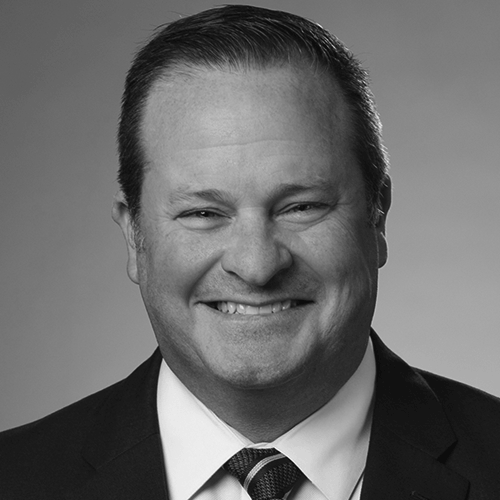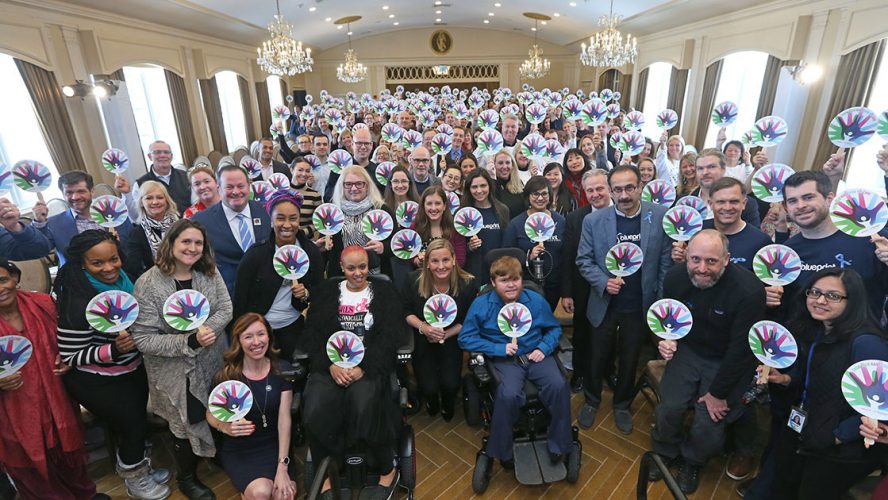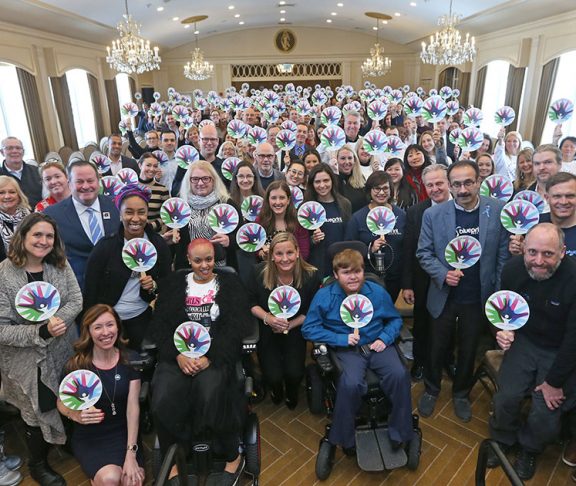
Bob Coughlin
President & CEO, MassBio
The last day of February is designated as Rare Disease Day, a day for patients, patient organizations, and disease foundations to come together to raise awareness for the 300 million people worldwide living with a rare disease. For my family and me, this day has special meaning.
In 2002, my wife and I found out we were going to have a child with cystic fibrosis (CF) – a rare and fatal genetic disease that affects roughly 30,000 people in the United States and 70,000 globally. When our son was born, a CF diagnosis was a death sentence. Many patients never lived to 20.
I wasn’t a doctor or scientist – at the time I was in the Massachusetts State Legislature – but the most important thing to me was saving my son’s life. I soon learned what that would entail.
Buying a cure
In most cases it takes a decade and over $2 billion to successfully bring a new drug to market. However, to even begin the development process, you must first raise awareness – a challenge for a disease that affects fewer than 200,000 patients nationally – then raise funds. This is a foreign idea for many, but for parents of children with rare diseases, the only option is to do something, whatever you can, to change their fate.
So we committed our lives to raising awareness and money to fund CF research. In essence, we were trying to buy a cure for our son. I had been involved with the CF Foundation for some time before my son was born but, once he was diagnosed, all my effort went into supporting its cause.
I donated everything I could and worked tirelessly alongside the foundation to raise awareness for CF so stakeholders all over the healthcare system were intimately familiar with the disease and, subsequently, the need for treatment.
With extensive donations and support, the CF Foundation invested millions of dollars in a few biotech companies, one of which would eventually develop a drug to treat the underlying cause of the disease in 2012 – 10 years after my son was born.
This drug instilled so much hope throughout the community but, unfortunately, it did not work for my son. He had a particular genetic mutation that would not respond to the course of treatment. We didn’t give up, we kept raising money, raising awareness, and advocating for treatment. Two more drugs for CF were approved, in part because of our efforts, although none worked for his tricky mutation.
Together we are strong
My son’s diagnosis turned our lives upside down. We were given a child with an expiration date and seemingly nothing that could save his life. Our lives became consumed with the desperate need to help him and, eventually, it paid off.
In October 2019, the drug that would treat my son, and 90 percent of CF patients, was approved by the FDA in what would be the single greatest day for my family.
Like any rare disease advocacy group, the CF Foundation’s story is one of a kind. It is a resounding success story of a foundation that raised an incredible amount of money and awareness for a single rare disease, which ultimately led to several treatments that would change the course of CF and its impact on patients and their families.
It also reminds us of the need to keep investing in innovation, both for the 10 percent of CF patients who don’t yet have a treatment and for the millions of patients who are still experiencing an unmet medical need.
There are over 7,000 known rare diseases, only 5 percent of which have an approved treatment. On Rare Disease Day, we must celebrate the progress we’ve made but remind each other that we must keep investing in innovation to address the remaining 95 percent of rare diseases.
Alone we are rare, together we are strong.

